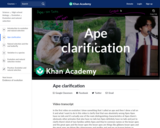
Ape clarification - that they have no tails.
- Subject:
- Biology
- Life Science
- Zoology
- Material Type:
- Lesson
- Provider:
- Khan Academy
- Provider Set:
- Khan Academy
- Author:
- Sal Khan
- Date Added:
- 03/17/2011

Ape clarification - that they have no tails.

In Unit 2, students will build their ability to read and understand informational text and begin to build their knowledge of frogs through closely reading excerpts of the informational text Everything You Need to Know about Frogs and Other Slippery Creatures. Students will use the information gained in reading these excerpts to help them write answers to the questions generated in Unit 1 after reading poems and narratives about frogs. For a mid-unit assessment, students will demonstrate their reading skills through reading a new text about reptiles and amphibians, and they will gather information to answer a research question.
In the second half of the unit, students will continue with the same central text and build their knowledge by studying three "freaky frogs" that have specific adaptations according to where they live: the glass frog, the Amazon horned frog, and the water-holding frog. They will read about these frogs to answer this question in an informative paragraph: How does where a frog lives affect how it looks and/or acts? In the End of Unit 2 Assessment, students read another excerpt of text about the poison dart frog, gather information to answer a research question, and write an on-demand informative paragraph to answer the question.
RI.3.1, RI.3.3, RI.3.4, RI.3.5, RI.3.7, RI.3.8, W.3.2, W.3.7, W.3.8, L.3.1d,e, L.3.4
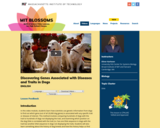
In this video module, students learn how scientists use genetic information from dogs to find out which gene (out of all 20,000 dog genes) is associated with any specific trait or disease of interest. This method involves comparing hundreds of dogs with the trait to hundreds of dogs not displaying the trait, and examining which position on the dog DNA is correlated with the trait (i.e. has one DNA sequence in dogs with the trait but another DNA sequence in dogs not displaying the trait). Students will also learn something about the history of dog breeds and how this history helps us find genes.

Students learn about the amazing adaptations of the ptarmigan to the alpine tundra. They focus one adaptation, the feathered feet of the ptarmigan, and ask whether the feathers serve to only keep the feet warm or to also provide the bird with floatation capability. They create model ptarmigan feet, with and without feathers, and test the hypothesis on the function of the feathers. Ultimately, students make a claim about whether the feathers provide floatation and support this claim with their testing evidence.
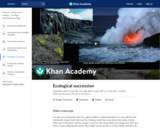
Communities are dynamic and change over time, and we can observe this process with particular clarity after a disturbance or on new land. Learn about primary and secondary succession, as well as pioneer species. Created by Sal Khan.
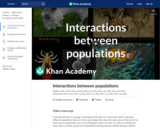
Learn about the many types of interspecific interactions: competition, predation, herbivory, symbiosis, parasitism, mutualism, commensalism. Created by Sal Khan.
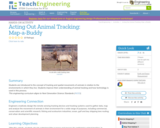
Students are introduced to the concept of tracking and spatial movements of animals in relation to the environments in which they live. Students improve their understanding of animal tracking and how technology is used in this process.
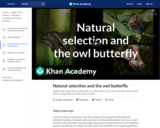
How the "Owl Butterfly" may have gotten the spot on its wings.